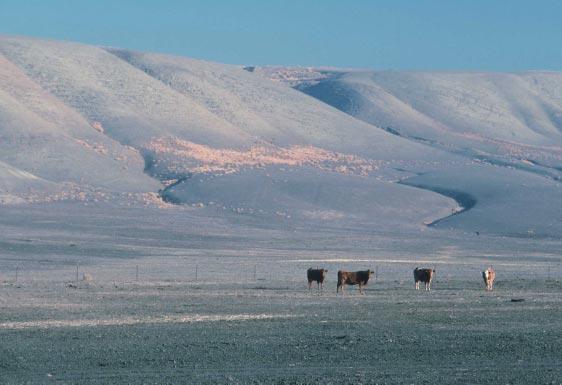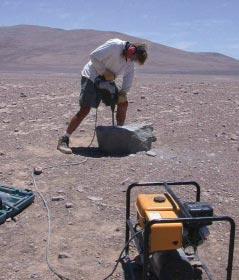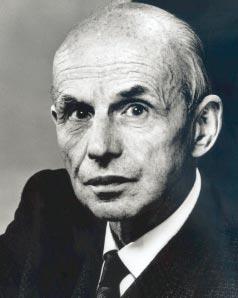
3 minute read
Highlights of Excellence
From the Ground Up: Revealing the Science of Soil

Advertisement
ìBerkeleyis to soils as London was to the development of biologyor geology: if you want to studysoils, Berkeleyis the place to go,îsaid CNR soil scientist and professor Ron Amundson. Thatís because Eugene Hilgard was not onlythe father of what is todaythe College of Natural Resources, but he founded soil science as a distinct academic field of studyin the United States.
Hilgard, born in Germanybut reared on the American frontier (then Illinois), was largelyeducated byhis parents and familyin his earlylife, spoke four languages and read several more, and ultimatelygained widespread interest and education in chemistry, biology, and geology. Before he came to Berkeley, as the State Geologist of Mississippi, Hilgard published a landmark report on the geologyand soils of the state that clearlyset the stage for the studyof soils as a separate branch of scientific knowledge. For both his agricultural and geological research, he was elected to the National Academyof Sciences in 1873, though much of his career still layahead on the fledgling Berkeleycampus.
In 1875, Hilgard joined the College of Agriculture as a professor of agriculture and botany. He first put the newCollege on the national scientific stage in 1884 through his Cotton Census for the Southern States and California. Although focusing on cotton, the report served as the first synthesis of the soil geographyof California, including its first agricultural map. His outline of the geographical/soil provinces of the state is still used today.
During this time, Hilgard provided the first general framework explaining the roles of salts and sodium on crop production and water infiltration, research inspired byhis contact with agricultural constituents in the state. He determined that applying gypsum would remediate sodic soils and improve their structure and hydraulic characteristics, chemical principles that remain applied globallyto this day.
Under Hilgard, Universityinstruction was made available in soil chemistry, soil physics, and in the genesis and classification of soils. By1913, soil science courses crossed three divisions in the College: agricultural chemistry, soil chemistryand bacteriology, and soil technology.
ìCourses still taught on the Berkeleycampus originate from those first taught byHilgard in the late nineteenth century,îsaid Amundson.
In addition to his Cotton Census work, Hilgard moved in other directions, including the role of climate on soil formation, including temperature and moisture, and the correlation between arid and humid soils.
Other important soil scientists of the earlyprogram included Earl Storie and Hans Jenny. In 1934, Storie published the nowclassic agricultural land rating system based on soil properties. His system became known as the Storie Index, and is still used todayto rank soils for their productive potential. The Index also has continued present dayuse in land appraisal, tax assessment, and land-use planning.
In 1936, Jennyjoined the facultyand made signification contributions to the fields of colloid chemistry, ion exchange, and pedology. His signature work was the 1941 book ìNo soil scientist in the historyof the Collegeóincluding Hilgardócommands greater international recognition than Hans Jenny,îsaid Amundson. ìAt Berkeleywe have an incrediblyrich heritage in basic soil science research,îsaid Amundson. He notes that the College is also well prepared for the application of soil science to a broad arrayof environmental issues. ìIn our College, we have scientists looking at carbon at all levels, from molecular scales at mineral surfaces, to soil microorganism metabolism of organic compounds, to carbon storage and release, to the atmosphere at regional and global scales. With soils holding more carbon than the entire worldís vegetation and the atmosphere combined, the carbon cycle is clearlya field where soil scientists will continue to be veryimportant,îhe said.

Factors of Soil Formation, which virtuallyrevolutionized the conceptual and quantitative viewof the terrestrial world.
Throughout his life, Jennyís scientific contributions were driven bya true love of the soil, combined with a cool, analytical skepticism. In retirement, which spanned nearly25 years, he turned his passions to protecting rare soil ecosystems. Using his training in and love of art and nature, he became an important advocate of stewardship and conservation. His efforts led to the creation of Jug Handle State Reserve near Caspar, California.
With an expanded scope including soil physics and soil chemistry, the Division of Soil Technologywas elevated to the Department of Soils in 1951. In 1955, the soils group merged with the Department of Plant Nutrition to form a two-campus Department of Soils and Plant Nutrition at Berkeleyand Davis, led at the time byJenny. The two sections of the department became autonomous on their separate campuses with the 1964 appointment of separate chairs.
In the midst of these reorganizations, Hilgardís legacyof a stellar soil science program continued. In the 1950s, Professor RoyOverstreet and his graduate student, Kenneth Babcock, formed a team that would gain international recognition for their work bringing together the fields of soil colloid chemistryand chemical thermodynamics. Babcockís first Ph.D. student, Garrison Sposito, todaycontinues this long-standing tradition (see Facultyand Specialists/Awards).
In 1951, soil scientist and chemist Douglas McClaren joined the facultyand helped launch the field of photobiology. He conducted pioneering experiments to quantifythe role that microbes playin moving nitrogen through the soil, a field todaystronglyrepresented and advanced by Professor MaryFirestone.
In the 1980s (see Plant and Microbial Biology) the Department was renamed Plant and Soil Biology, though in 1988, it was again renamed the Department of Soil Science, reflecting its long historyand ongoing vision. As part of a major CNR academic reorganization in the 1990s, the department was dissolved and its facultymerged with the Department of Environmental Science, Policy, and Management.
The Collegeís soil scientists reside in the Division of Ecosystem Sciences in the Department of Environmental Science, Policy, and Management.



